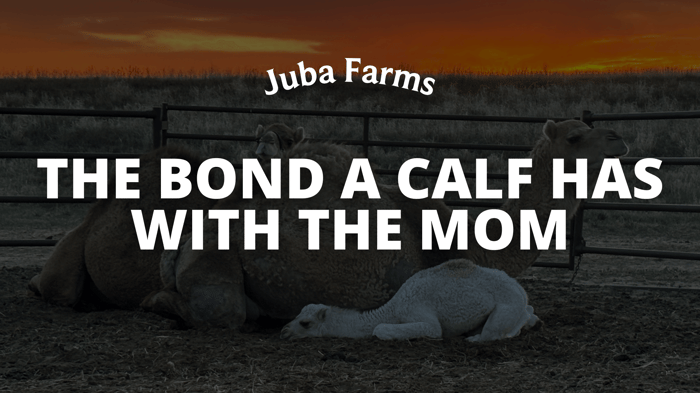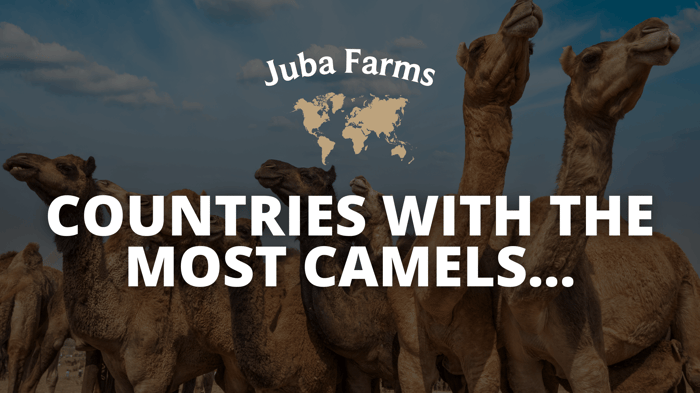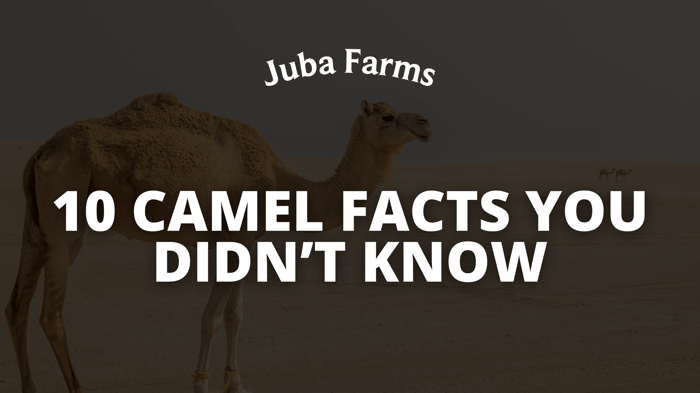Table of Contents
Camel milk is becoming more popular around the world—but behind every bottle is a story of connection, patience, and nature. It’s a story that starts with camel calves and their mothers.
The bond between a camel calf and its mom is incredibly important to our process. Without it, there would be no milk to bottle. In this article, we explore how camel calves play a key role in the production of camel milk, how herders care for these special animals, and why this bond matters.
Whether you're a fan of camel milk or just curious, understanding camel calves helps you appreciate what goes into every sip.

The First Days
When a camel calf is born, the mother stays close. These first days are full of bonding, nursing, and gentle calls between mom and baby. The mom’s milk comes in soon after birth, and the calf depends on it for warmth, hydration, and nutrition.
Camel moms are very protective. They will not produce milk—or let anyone near it—unless their calf is nearby. This natural behavior ensures the calf gets all the care it needs.
Camel herders understand this deeply. They allow the calf to nurse first before collecting milk. This not only keeps the calf healthy, but also helps the mom feel safe and relaxed.
Why the Bond Matters for Milk
Camel milk production is different from cows or goats. You can’t just milk a camel on command. The mother has to feel calm and trust the people around her—and that often only happens when her calf is present.
This is one reason camel milk can be more expensive. It takes time, respect, and a close relationship between herder, camel mom, and camel calf.
Calves usually stay with their moms for 12 to 18 months. During that time, herders make sure calves are fed first. Only extra milk is collected for people.
Camel Calves: Growing Up Strong
Camel calves grow slowly and stay close to their moms. They begin to walk just hours after birth, but they still rely on their mothers for guidance and learning.
Over the first few months, the calf begins to explore more, mimic adult camels, and slowly eat soft plants. But milk remains their main food for at least 6 months.
During this time, the farmers keep a close eye on both mom and calf. They make sure the calf is healthy, the mom is relaxed, and that their bond stays strong.
A Gentle Process
Milking a camel is a slow, respectful process. Before a camel lets down any milk, the calf must first stimulate the mother by suckling. The babies eat first. This is nature’s way of ensuring the calf receives enough nourishment.
Once the calf begins to nurse, the mother’s milk let-down reflex is triggered. After a few moments, the herder gently moves the calf aside and begins milking using clean, sanitized milking clusters. This modern equipment ensures that the milk is collected safely and hygienically, meeting food safety standards while keeping the camel calm and comfortable. Then, the calf is allowed to return and finish nursing.
This practice ensures the calf’s health is prioritized and keeps the mother calm and cooperative. It’s a routine built on trust and care.. First, the calf is brought near the mother. Sometimes the calf will start nursing, which triggers the mom’s milk let-down reflex. After a few minutes, the herder gently moves the calf aside and milks the camel by hand.
Once done, the calf returns to finish nursing. This pattern repeats twice a day, and it helps both camels and herders build trust.
The Role of Farmers
Camel farmers are skilled and patient. They often learn from family, passing down knowledge from generation to generation. They know each camel’s behavior, health signs, and preferences.
In East Africa, the Middle East, and South Asia, camel herding is not just work, it's their way of life. It’s built on a deep understanding of how camel moms and camel calves behave.
Why This Bond Matters to You
If you enjoy camel milk, you’re part of this story too. Every bottle represents hours of care, months of growth, and a bond between two camels that can’t be rushed.
Understanding the role of camel calves helps us value the product even more. It’s not made in a factory. It’s nurtured on farms where animal welfare and respect are part of daily life.
Camel Calves in Different Regions
In Somalia, camel calves are often named early and stay with the herd as they grow. In Rajasthan, India, camels and their calves walk long distances between grazing areas. In Saudi Arabia, herders use songs and gentle calls to guide and calm their herds.
No matter the location, one thing stays the same: the calf is at the center of the milking process.
Camel Milk and Sustainability
Caring for camel calves and their moms isn’t just good for animal welfare—it’s good for the planet. Camels are low-impact grazers. They don’t need lush pastures or lots of water, and they thrive in places where other animals can’t.
By supporting camel milk, you’re supporting a more sustainable food system. And it all starts with respecting the bond between camel moms and camel calves.
What Juba Farms Does
At Juba Farms, we work with a trusted network of camel farms to bring customers 100% pure camel milk. We partner with U.S.-based producers who follow the highest standards in animal care, hygiene, and food safety. Our goal is to make camel milk more accessible to everyone—without compromising on quality or ethics. And we do it while offering the best prices in the U.S.
Final Thoughts
Camel milk is more than just a drink—it’s a result of love, patience, and tradition. At the heart of it are camel calves and their moms. Their bond is what makes camel milk possible.
When you choose camel milk, you’re choosing to support a way of life that values animals, people, and the land. You’re saying yes to slower, better farming. And you’re honoring a relationship that’s as old as the desert itself.
Ready to give it a try? Juba Farms offers camel milk sourced with care and compassion. Behind every bottle is a bond worth celebrating. Click here to try it today!








